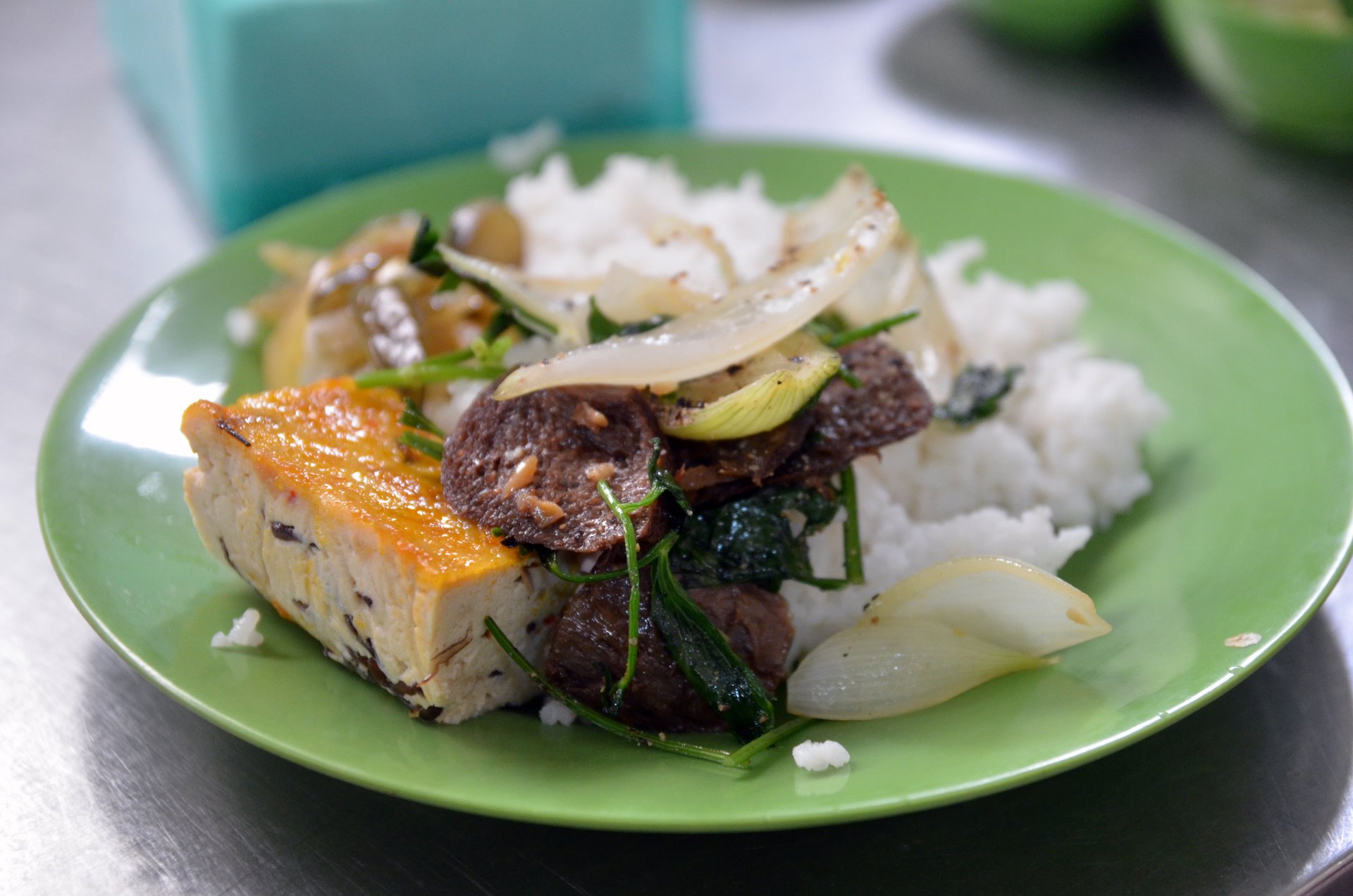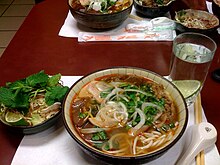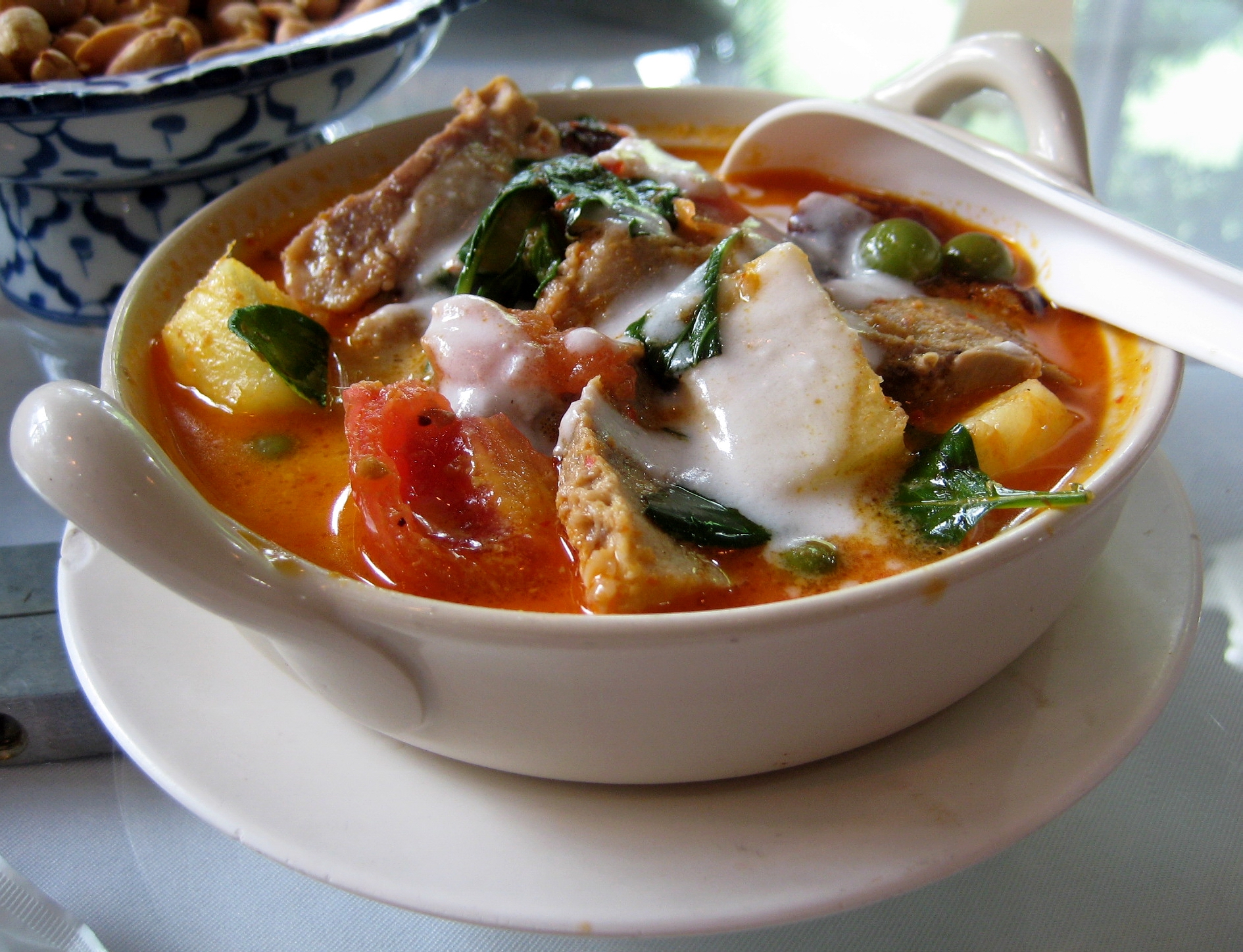Biography Source google.com.pk
Vietnamese cuisine
Vietnamese cuisine encompasses the foods and beverages of Vietnam, and features a combination of five fundamental tastes (Vietnamese: ngũ vị) in the overall meal.[1] Each Vietnamese dish has a distinctive flavor which reflects one or more of these elements. Common ingredients include fish sauce, shrimp paste, soy sauce, rice, fresh herbs, and fruits and vegetables. Vietnamese recipes use lemongrass, ginger, mint, Vietnamese mint, long coriander, Saigon cinnamon, bird's eye chili, lime, and basil leaves.[2] Traditional Vietnamese cooking is greatly admired for its fresh ingredients, minimal use of dairy and oil, and reliance on herbs and vegetables. With the balance between fresh herbs and meats and a selective use of spices to reach a fine taste, Vietnamese food is considered one of the healthiest cuisines worldwide.
Vietnamese cuisine
Vietnamese cuisine encompasses the foods and beverages of Vietnam, and features a combination of five fundamental tastes (Vietnamese: ngũ vị) in the overall meal.[1] Each Vietnamese dish has a distinctive flavor which reflects one or more of these elements. Common ingredients include fish sauce, shrimp paste, soy sauce, rice, fresh herbs, and fruits and vegetables. Vietnamese recipes use lemongrass, ginger, mint, Vietnamese mint, long coriander, Saigon cinnamon, bird's eye chili, lime, and basil leaves.[2] Traditional Vietnamese cooking is greatly admired for its fresh ingredients, minimal use of dairy and oil, and reliance on herbs and vegetables. With the balance between fresh herbs and meats and a selective use of spices to reach a fine taste, Vietnamese food is considered one of the healthiest cuisines worldwide.
Yin yang balance[edit]
The principle of yin and yang is applied in composing a meal in a way that provides a balance that is beneficial for the body. While contrasting texture and flavors are important, the principal primarily concerns the "heating" and "cooling" properties of ingredients. Certain dishes are served in their respective seasons to provide contrasts in temperature and spiciness of the food and environment.
Salt is used as the connection between the worlds of the living and the dead. Bánh phu thê is used to remind new couples of perfection and harmony at their weddings. Food is often placed at the ancestral altar as an offering to the dead on special occasions (such as Lunar New Year). Cooking and eating play an extremely important role in Vietnamese culture. The word ăn (eat) is included in a great number of proverbs and has a large range of semantic extensions.
Vietnamese Food Recipes
Vietnamese Food Recipes
Vietnamese Food Recipes
Vietnamese Food Recipes
Vietnamese Food Recipes
Vietnamese Food Recipes
Vietnamese Food Recipes
Vietnamese Food Recipes
Vietnamese Food Recipes
Vietnamese Food Recipes
Vietnamese Food Recipes
Vietnamese Food Recipes
Vietnamese Food Recipes
Vietnamese Food Recipes
Vietnamese Food Recipes
Vietnamese Food Recipes
Vietnamese Food Recipes













No comments:
Post a Comment